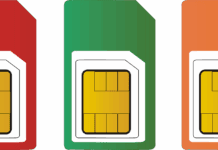
What Is Meant By “VISA DDA PUR AP”? Before we get into what it means, let’s uncover those letters. The word “VISA”, needless to say, is the card a bank or a credit card uses to pay within the VISA network, and it shouldn’t be that hard to understand. “DDA” refers to a Deposit Account on Demand, for instance, your checking account. “PUR” is equated to a purchase, and “AP” is the abbreviation for Authorization Pending. Collecting all the pieces of information, the bank informs you that it has guaranteed the payment of an unprocessed purchase by reserving the amount of the transaction. It’s all that simple!
What’s With the Merchant Names and Numbers?
Almost immediately below “VISA DDA PUR AP,” you’ll find a numeric identifier and the merchant’s name that you have made a purchase with. The number, which is the merchant ID code, assists the bank in identifying the person with whom the customer has a deal. See, it is kinda true that the business name might not always match what you expect. To illustrate, if you go shopping at a small retailer, the name might show up as a big company or the payment provider that they have selected. This, in turn, supports the bank and merchant in reconnecting simultaneous actions during the later transaction stages. So yes, in a way, the appearance is somewhat different than expected; it should not come as a surprise.
Why Does This Code Show Up?
Thus, the question arises as to what situations and why “VISA DDA PUR AP” occurs? The point is that it would be triggered by the merchant when the payment is done by card at the store or by doing shopping on the internet but only if the vendor has not claimed the revenue yet. The concerned financial institution reserves the amount of money for the given transaction. It is done for the vendor’s (the seller’s) safety and the customer’s (you the buyer) guarantee that there will be no overspending. The action is sort of like a two-sided protection mechanism, to put it in the simplest way possible!
Where You’ll See These Holds
There are many places that offer the hold service, including some of the biggest online stores and all the small ones you visit personally every day. A good example would be that when you book a hotel they might block the down deposit for your room. And just in the same sense, the business you rented the car from may hold some more money in case there are any damages. Every now and then, small holds are made, such as a few dollars, just to verify your account. In other cases, the hold is the same amount as the total price of your transaction.
How Much Are These Holds? Usually?
The numbers of the hold and its size differ slightly. For example, in some cases, it is just a one-dollar hold that is used to ensure that your card is valid, and in others, the amount equals the purchase price. When you buy a $50 t-shirt, for example, your account should reflect a $50 hold. When you buy something on the internet for $100, the hold will probably be $100 until the time when the merchant ships your order. That’s usually how it goes!
It can also appear as one of the following in your credit card Statement :
| 1 | Checkcard visa dda pur ap 469216 apple com bill 866 712 7753 * ca |
| 2 | Chkcard visa dda pur ap 469216 apple com bill 866 712 7753 * ca |
| 3 | Chkcardvisa dda pur ap 469216 apple com bill 866 712 7753 * ca |
| 4 | Misc. Debit visa dda pur ap 469216 apple com bill 866 712 7753 * ca |
| 5 | Pending visa dda pur ap 469216 apple com bill 866 712 7753 * ca |
| 6 | Pos debit visa dda pur ap 469216 apple com bill 866 712 7753 * ca |
| 7 | Pos pur visa dda pur ap 469216 apple com bill 866 712 7753 * ca |
| 8 | Pos purch visa dda pur ap 469216 apple com bill 866 712 7753 * ca |
| 9 | Pos purchase visa dda pur ap 469216 apple com bill 866 712 7753 * ca |
| 10 | Pos refund visa dda pur ap 469216 apple com bill 866 712 7753 * ca |
| 11 | Pre-auth visa dda pur ap 469216 apple com bill 866 712 7753 * ca |
| 12 | Visa check card visa dda pur ap 469216 apple com bill 866 712 7753 * ca mc |
Also some times it may be like :
Visa dda pur ap 426979 klemms express salem * nh
Visa dda pur ap 427539 pomodori 978 2551722 * ma
Visa dda pur ap 432688 advance auto parts 8608 danvers * ma
Visa dda pur ap 469216 apple com bill 866 712 7753 * ca
Visa dda pur ap 469216 swa inflight wifi 800 435 9792 * ca
Visa dda pur ap 469216 tst bennetts salem 603 328 8444 * nh
Visa dda pur ap 479338 viasatswairlines carlsbad * ca
Related Posts :
Looking for other unknown charges? See our full list here: Unknown Bank Charges List.





